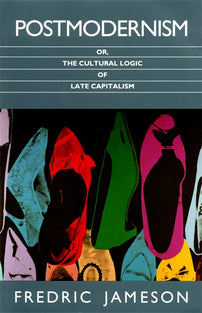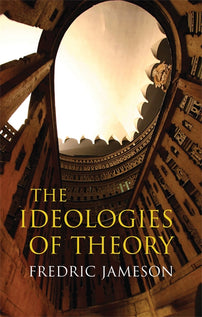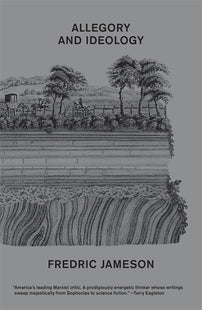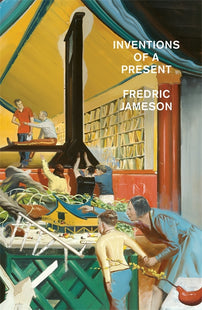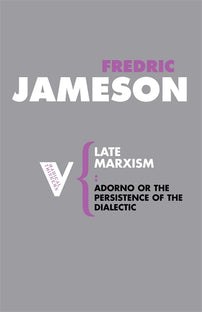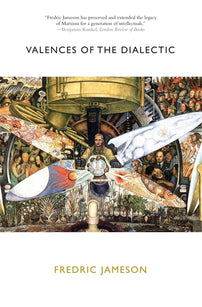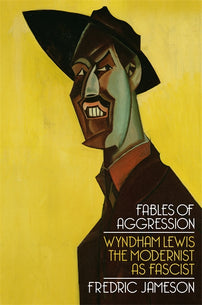Historicizing the Present
Robert T. Tally Jr revisits Fredric Jameson's Postmodernism, or, the Cultural Logic of Late Capitalism for the eighth instalment of our Jameson at 90 series.

Like many readers, I encountered Jameson’s concept of cognitive mapping earlier in the 1984 New Left Review article “Postmodernism, or, the Cultural Logic of Late Capitalism” (a version of which became Chapter 1 of the book). But, unlike most others, I encountered Jameson as a teacher in the classroom before I read anything by him. During my sophomore year, I took an introductory Comp Lit course with him called “What Is Literature?,” a title that was deceptively simple while also tipping its cap to Jean-Paul Sartre’s great 1948 work. It was – and I think all of Fred’s former students know the feeling – mind-blowing, at once expanding horizons almost exponentially while also offering new ways of seeing the minutest details at the formal levels of immanent critique. It was also terribly enjoyable, and, in many ways, my own leap from philosophy (my major) to literature was a result of Jameson’s classes, which allowed me to pursue my literary and philosophical interests in markedly enlarged and enriched fields. The territorial metaphor of “fields” is apt, since Jameson’s classes surveyed and mapped so much cultural terrain, thus modelling in a practical way the sort of critical-theoretical work for which he is best known.
[book-strip index="1"]
As Phillip E. Wegner has observed in his Periodizing Jameson (2014), Jameson’s attempt to “outflank” the problem of postmodernism made recourse to a methodological figure associated with Walter Benjamin, namely the constellation. As with a constellation, in which various points or stars are interconnected conceptually while not becoming absorbed into a single stellar unity, Jameson establishes nodes almost like signposts to help us understand the various sites in which postmodernism and postmodernity emerge and manifest themselves. Notably, each chapter of postmodernism not only bears a title, but has attached to it a keyword – Culture, Theory, Space, Video, Architecture, and so on – indicates one locus in which the postmodern may be assessed. Unlike Raymond Williams’s Keywords, these signs are not the subject of the analysis, and it probably ought to go without saying that there are far more potential labels and sites that Jameson could have also chosen. Rather, these keywords represent the particular sites of this constellation, the one developed in this book, with it well understood that many other different constellations are possible. But, as with celestial navigation, this constellation effectively functions as an element in the overall project of cognitive mapping.
As a concept, Jameson’s sense of cognitive mapping famously combined the urban planning perspectives on “imageability” and “wayfinding” in Kevin Lynch’s The Image of the City (1960) with Louis Althusser’s formulation of ideology as an imaginary solution to real contradictions, ultimately highlighting the need for a “global cognitive mapping, on a social as well as a spatial scale” (54). Jameson’s “digression on cartography” in Postmodernism (51–54) illustrated the ways that individual subjects have historically attempted to make sense of, or give form to, the spaces of their own experience in relation to some broader geographic and also social totality. In many respects, this is another, more spatialized figure for narrative itself and thus for the subject of Jameson’s lifelong work, as I asserted in my book Fredric Jameson: The Project of Dialectical Criticism (2014). Jameson’s figure was almost too successful, leading him to add that “cognitive mapping cannot (at least in our time) involve anything so easy as a map; indeed, once you knew what ‘cognitive mapping’ was driving at, you were to dismiss all figures of maps and mapping from your mind and try to imagine something else” (409). Jameson goes on to say that “‘Cognitive mapping’ was in reality nothing but a code word for ‘class consciousness’” (417–418), albeit a new mode or form of class consciousness that registered the pervasive “spatiality” of a postmodern situation thoroughly conditioned by globalization, its processes, and its effects.
[book-strip index="2"]
My own sense of literary cartography, geocriticism, and spatiality derives a great deal from Jameson’s project of cognitive mapping. (“Jameson’s Project of Cognitive Mapping” was actually the title of my first published essay, which appeared in Rolland G. Paulson’s edited collection Social Cartography: Mapping Ways of Seeing Social and Educational Change [1996]). But then nearly all my work, my teaching, and my thinking owes much to Jameson’s influence, from those first weeks of class in an introductory literature course to his frequent, patient, and generous conversations, and on to his vast treasury of writings that have done so much to aid us in making sense of this world we live in. In a sense, the project of Postmodernism just instantiates, refracts, and extends his lifelong and continuous efforts to historicize the present by mapping its dynamic and protean spaces. This project remains as vital and as necessary as ever, and Jameson’s Postmodernism, however dated some of its examples or content may seem, remains powerfully relevant – for better and for worse – today. May we continue to make use of its resources for the hitherto unimagined mapping projects to come.
See all works by Fredric Jameson here. His new book, Inventions of a Present: The Novel in its Crisis of Globalization is out on May 7.
[book-strip index="3"]

